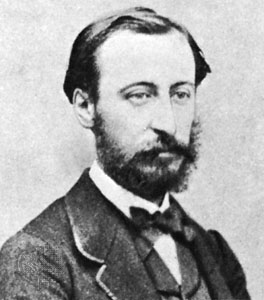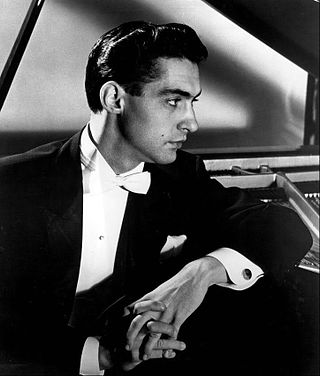
Samuel Osmond Barber II was an American composer, pianist, conductor, baritone, and music educator, and one of the most celebrated composers of the mid-20th century. Principally influenced by nine years' composition studies with Rosario Scalero at the Curtis Institute and more than 25 years' study with his uncle, the composer Sidney Homer, Barber's music usually eschewed the experimental trends of musical modernism in favor of traditional 19th-century harmonic language and formal structure embracing lyricism and emotional expression. However, he adopted elements of modernism after 1940 in some of his compositions, such as an increased use of dissonance and chromaticism in the Cello Concerto (1945) and Medea's Dance of Vengeance (1955); and the use of tonal ambiguity and a narrow use of serialism in his Piano Sonata (1949), Prayers of Kierkegaard (1954), and Nocturne (1959).

The Concerto for Orchestra, Sz. 116, BB 123, is a five-movement orchestral work composed by Béla Bartók in 1943. It is one of his best-known, most popular, and most accessible works.
Carl Nielsen's Concerto for Clarinet and orchestra, op. 57 [D.F.129] was written for Danish clarinetist Aage Oxenvad in 1928. The concerto is presented in one long movement, with four distinct theme groups.

Mendelssohn's Piano Concerto No. 1 in G minor, Op. 25, was written in 1830–31, around the same time as his fourth symphony ("Italian"), and premiered in Munich on 17 October 1831. This concerto was composed in Rome during a travel in Italy after the composer met the pianist Delphine von Schauroth in Munich. The concerto was dedicated to her. Mendelssohn attended one party after another in Munich in October 1831, the month of the premiere, but he also played chamber music and taught double counterpoint. He performed the piece himself at the premiere, which also included performances of his Symphony No. 1 and the Overture from Midsummer Night's Dream. He had already written a piano concerto in A minor with string accompaniment (1822) and two concertos with two pianos (1823–24).

The Piano Concerto No. 1 in B♭ minor, Op. 23, was composed by Pyotr Ilyich Tchaikovsky between November 1874 and February 1875. It was revised in 1879 and in 1888. It was first performed on October 25, 1875, in Boston by Hans von Bülow after Tchaikovsky's desired pianist, Nikolai Rubinstein, criticised the piece. Rubinstein later withdrew his criticism and became a fervent champion of the work. It is one of the most popular of Tchaikovsky's compositions and among the best known of all piano concerti.

The Piano Concerto No. 2 in G minor, Op. 22 by Camille Saint-Saëns was composed in 1868 and is probably Saint-Saëns' most popular piano concerto. It was dedicated to Madame A. de Villers. At the première on 13 May the composer was the soloist and Anton Rubinstein conducted the orchestra. Saint-Saëns wrote the concerto in three weeks and had very little time to prepare for the première; consequently, the piece was not initially successful. The capricious changes in style provoked Zygmunt Stojowski to quip that it "begins with Bach and ends with Offenbach."

The Piano Concerto No. 4 in C minor, Op. 44 was composed by Camille Saint-Saëns in 1875. It was premièred on October 31, 1875, at the Théâtre du Châtelet of Paris, with the composer as the soloist. The concerto is dedicated to Anton Door, a professor of piano at the Vienna Conservatory. It continues to be one of Saint-Saëns' most popular piano concertos, second only to the Piano Concerto No. 2 in G minor.

The Symphony No. 2 in E minor, Op. 27, is a four-movement composition for orchestra written from October 1906 to April 1907 by the Russian composer Sergei Rachmaninoff. The premiere was performed at the Mariinsky Theatre in Saint Petersburg on 26 January 1908, with the composer conducting. Its duration is approximately 60 minutes when performed uncut; cut performances can be as short as 35 minutes. The score is dedicated to Sergei Taneyev, a Russian composer, teacher, theorist, author, and pupil of Pyotr Ilyich Tchaikovsky. The piece remains one of the composer's most popular and best known compositions.
Piano Concerto No. 3 in C major, Op. 26, is a piano concerto by Sergei Prokofiev. It was completed in 1921 using sketches first started in 1913.
Samuel Barber's Concerto for Violoncello and Orchestra, Op. 22, completed on 27 November 1945, was the second of his three concertos. Barber was commissioned to write his cello concerto for Raya Garbousova, an expatriate Russian cellist, by Serge Koussevitzky on behalf of Garbusova and the Boston Symphony Orchestra. Funds for the commission were supplied, however, by John Nicholas Brown, an amateur cellist and a trustee of the Boston Symphony Orchestra. The score is dedicated to John and Anne Brown. Barber was still on active duty with the U. S. Army at the time he received the commission, and before beginning work asked Garbousova to play through her repertoire for him so that he could understand her particular performing style and the resources of the instrument. Garbousova premiered it with the Boston Symphony Orchestra in Symphony Hall, Boston, on 5 April 1946, followed by New York performances at the Brooklyn Academy of Music on 12 and 13 April. The concerto won Barber the New York Music Critics' Circle Award in 1947.
Samuel Barber completed his Violin Concerto, Op. 14, in 1939. It is a work in three movements, lasting about 22 minutes.

Piano Concerto No. 2 in F major, Op. 102, by Dmitri Shostakovich was composed in 1957 for the 19th birthday of his son Maxim, who premiered the piece during his graduation concert at the Moscow Conservatory. It contains many similar elements to Shostakovich's Concertino for Two Pianos: both works were written to be accessible for developing young pianists. It is an uncharacteristically cheerful piece, much more so than most of Shostakovich's works.

John Browning was an American pianist known for his reserved, elegant style and sophisticated interpretations of Bach and Scarlatti and for his collaboration with the American composer Samuel Barber.

Pyotr Ilyich Tchaikovsky's Piano Concerto No. 3 in E-flat major was at first conceived by him as a symphony in the same key. But he abandoned that idea, jetisoned all but the planned first movement, and reworked this in 1893 as a one-movement Allegro brillante for piano and orchestra. His last completed work, it was duly published as Opus 75 the next year, after he died, but given by publisher Jurgenson the title "Concerto No. 3 pour Piano avec accompagnement d'Orchestre".
Capricorn Concerto, Op. 21, is a composition for flute, oboe, trumpet, and strings by Samuel Barber, completed on September 8, 1944. A typical performance lasts approximately 14 minutes.
Samuel Barber's Symphony in One Movement (Op. 9), was completed 24 February 1936. It was premiered by Rome's Philharmonic Augusteo Orchestra under the baton of Bernardino Molinari on 13 December 1936. It lasts around 21 minutes. The title given in the printed score of the work is First Symphony (in One Movement), and the uniform title is Symphonies, no. 1, op. 9.
The Piano Concerto No. 1, Sz. 83, BB 91 of Béla Bartók was composed in 1926. Average playing time is between 23 and 24 minutes.

It is not known when Mozart completed his Concerto for Two Pianos and Orchestra in E-flat major, K. 365/316a, but research by Alan Tyson shows that cadenzas for the first and third movements are written in his and his father's handwriting on a type of paper used between August 1775 and January 1777. However, most sources, including Alan Tyson's book Mozart: Studies of the Autograph Scores or more recently Lindeman's The Concerto: A Research and Information Guide (2006) indicate that it was composed in 1779. It is presumed that Mozart wrote it to play with his sister Maria Anna ("Nannerl"). Years later he performed it in a private concert with pupil Josepha Barbara Auernhammer.
Benjamin Britten's Piano Concerto, Op. 13, is the composer's sole piano concerto.

Concerto for Piano with Orchestra is a piano concerto by the Mexican composer Carlos Chávez, written between 1938 and 1940.










